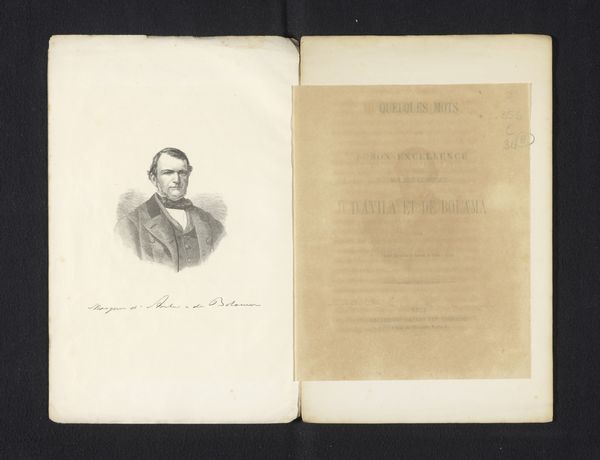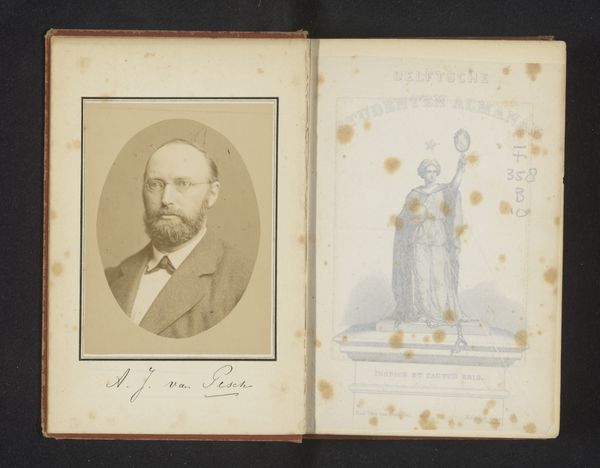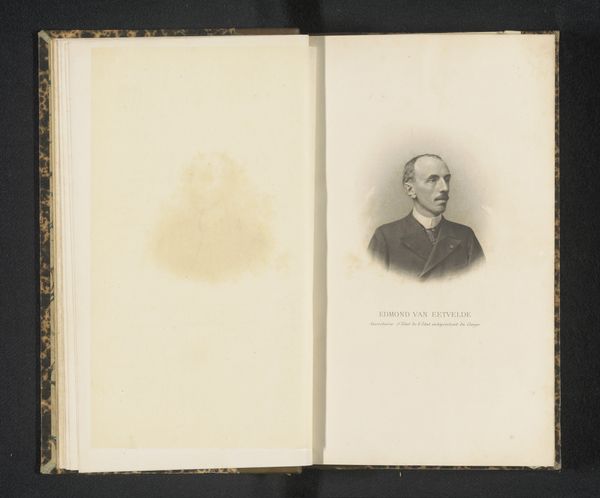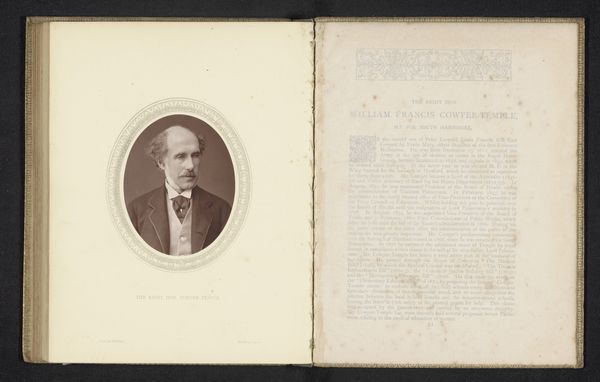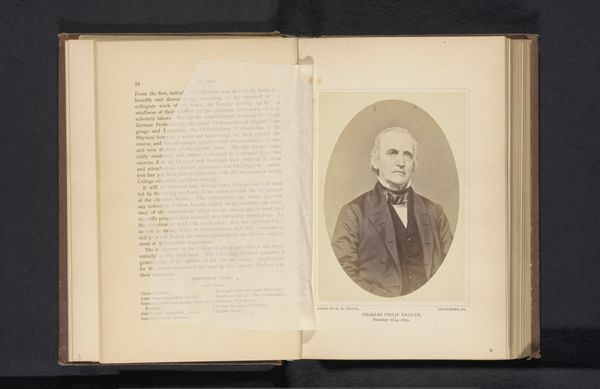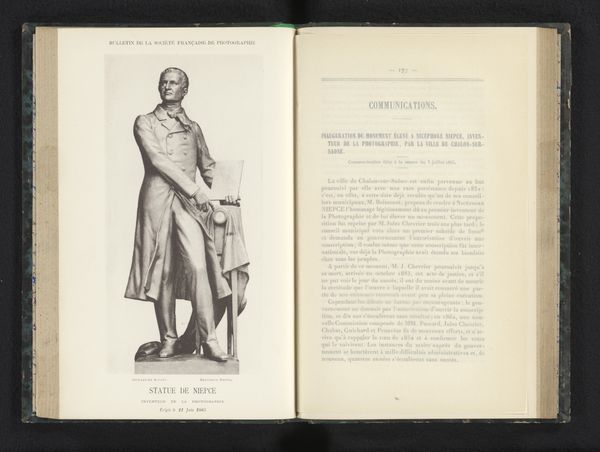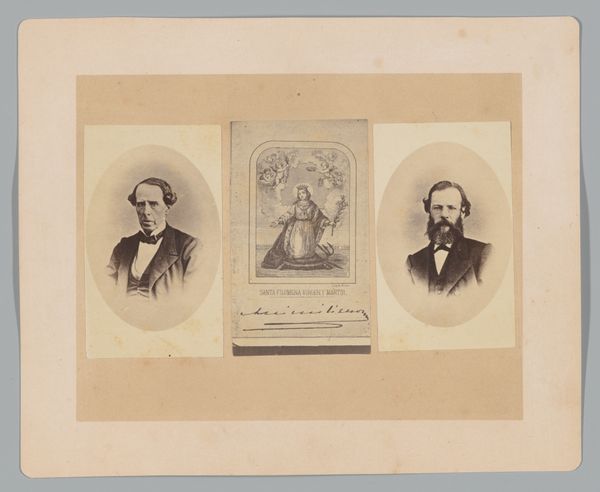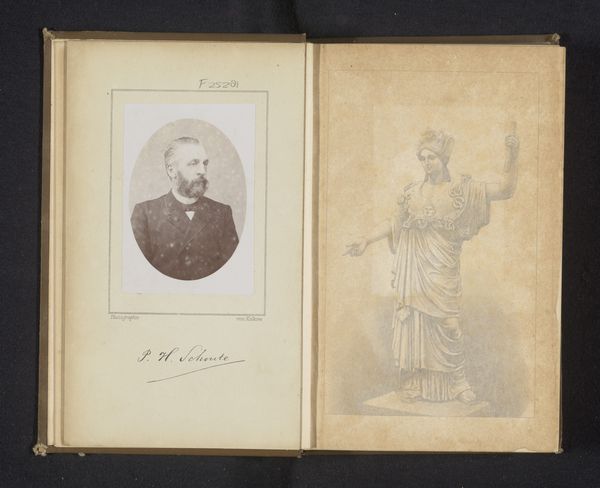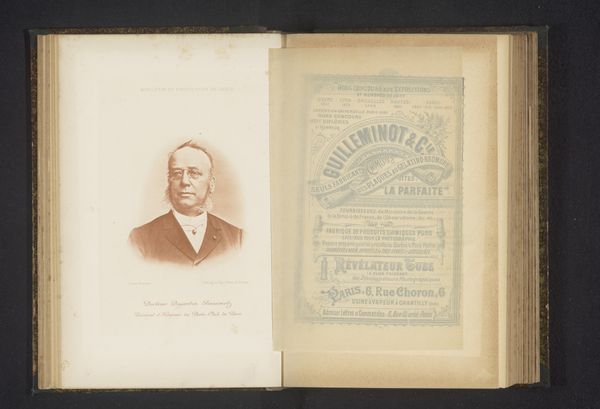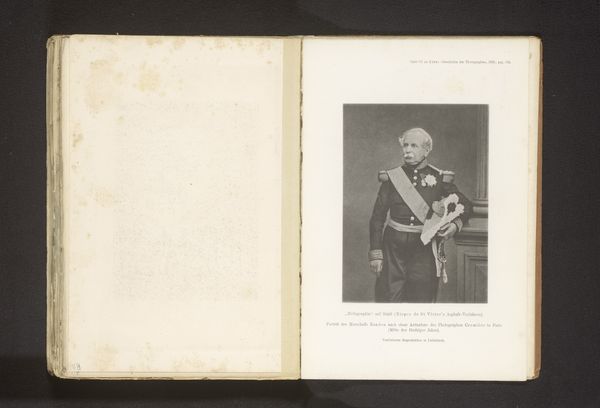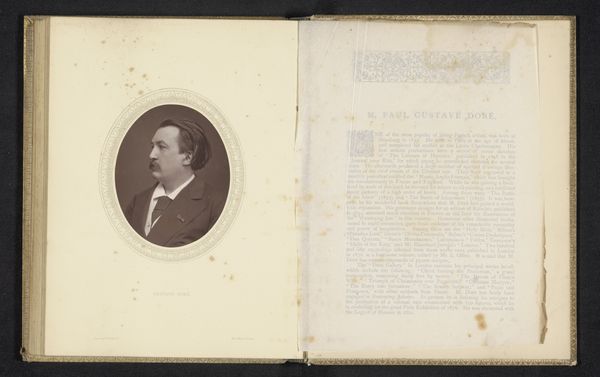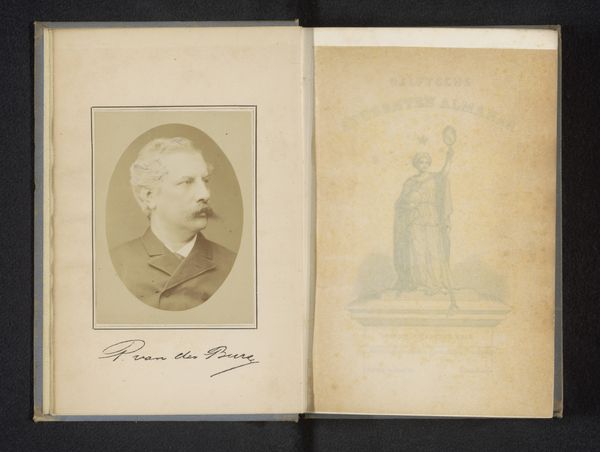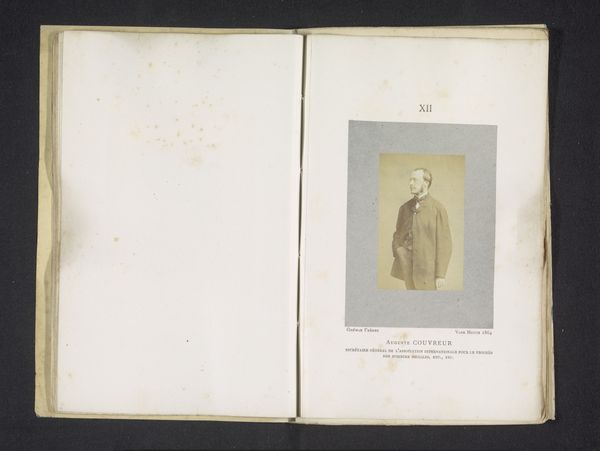
Dimensions: height 174 mm, width 119 mm, thickness 20 mm
Copyright: Rijks Museum: Open Domain
Editor: Here we have the "Delftsche studenten-almanak voor 1872," created in 1871. It's a print, an engraving, now housed in the Rijksmuseum. It’s interesting how it combines a portrait with an allegorical engraving. How do you interpret the juxtaposition of the photographic portrait with the printed illustration and text in this piece? Curator: For me, this almanac is compelling as a material object, a convergence of different production methods and social functions. The photographic portrait signals a burgeoning culture of individual representation made possible by new technologies, a break from solely relying on painted portraiture for bourgeois identity. Editor: So, it's about accessibility and the changing means of creating images? Curator: Precisely. While the engraving, with its classical figure and Latin motto, harkens back to older traditions of knowledge and virtue. The combination speaks volumes about the changing social and intellectual landscape of the Dutch student. Consider the labor involved: the photographer, the engraver, the printer, each contributing to the final product intended for consumption by a specific group of students. What does that tell us? Editor: That mass production and specialized labor were shaping even personal items like this, creating a kind of collective identity for these students? Curator: Exactly! It transcends the purely aesthetic; it’s a manufactured object imbued with social meaning, a testament to the era's evolving industrial and cultural practices. We need to be thinking about who had access to this book. Editor: I never really thought of it in terms of its production process. That context is fascinating. Curator: Seeing art this way is a powerful approach! Now, you see the artwork from a new angle!
Comments
No comments
Be the first to comment and join the conversation on the ultimate creative platform.
